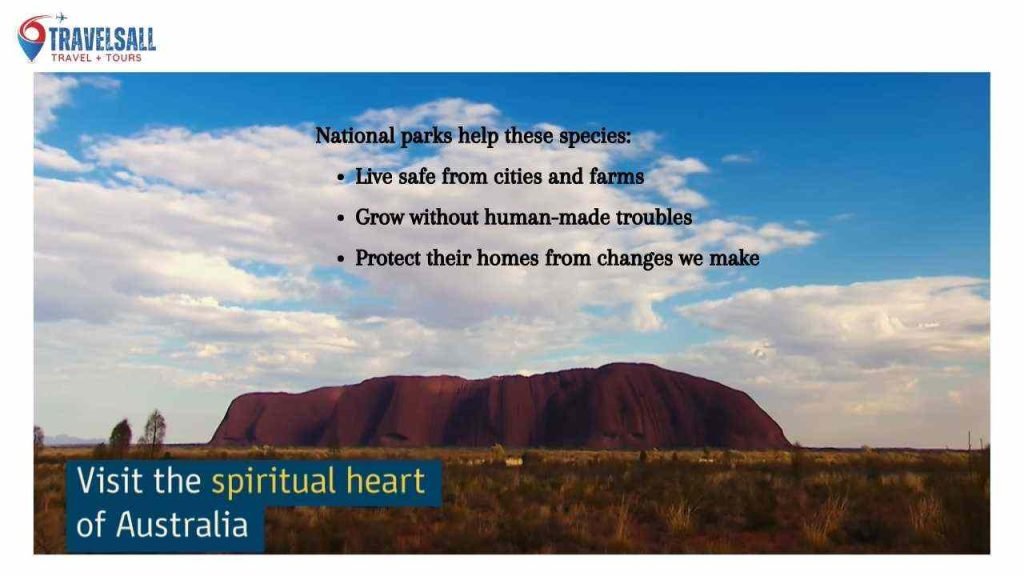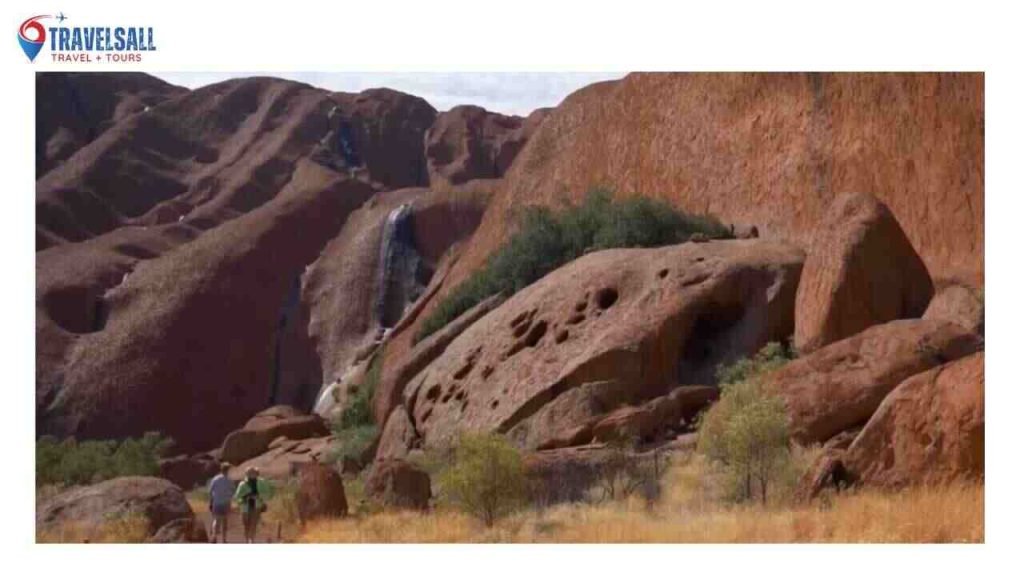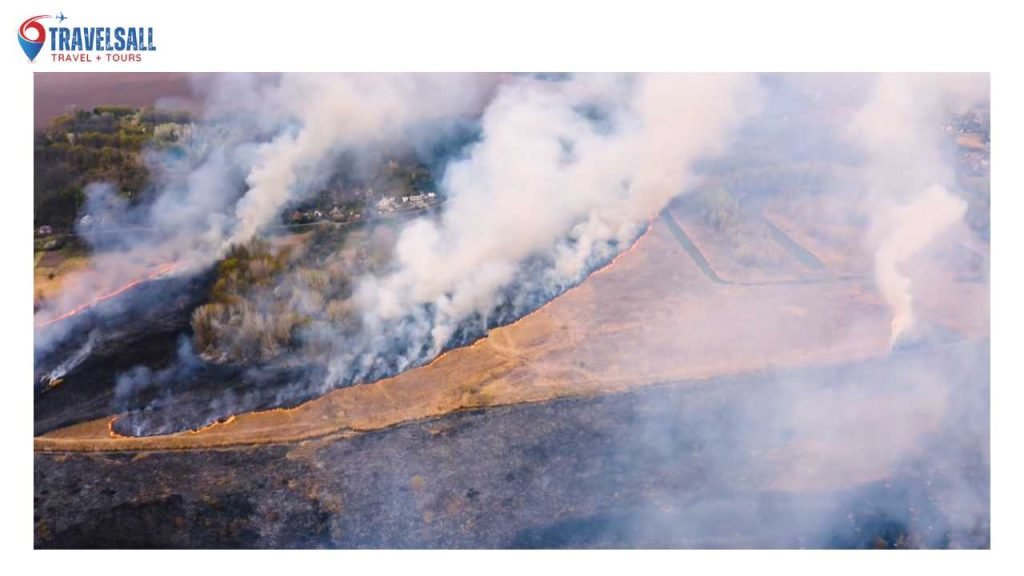The purpose of National Parks in Australia is to protect natural environments and conserve biodiversity.
They offer unique experiences to visitors while ensuring the preservation of wildlife and landscapes.
Australia’s National Parks serve as sanctuaries for the nation’s distinct flora and fauna, each teeming with life and vibrant ecosystems.
Established to safeguard the country’s rich natural heritage, these parks play a critical role in environmental conservation.
They provide a haven for countless species, some of which are endemic and can’t be found anywhere else in the world.
Besides ecological benefits, National Parks also offer educational and recreational opportunities. It makes them pivotal areas for research and tourism.
Australian National Parks balance conservation with public enjoyment, fostering sustainable tourism, cultural appreciation, and natural exploration.
With their stunning landscapes and diverse activities, from hiking to wildlife watching. These parks play an essential role in the environmental, economic, and social fabric of Australia.
Table of Contents
ToggleAustralian National Parks: Custodians Of Natural Heritage

Australia’s national parks are safe homes for wild things. These parks keep nature as it was long ago. They are special places where we can see, learn, and enjoy Australia’s unique animals and lands.
Biodiversity Hotspots Under Protection
In these natural spaces, many kinds of plants and animals live. Some are found only in Australia. National parks are their protective shields against harm.
National parks help these species:
- Live safe from cities and farms
- Grow without human-made troubles
- Protect their homes from changes we make
Living Museums Of Ecological History
National parks are like open-air museums. They show us how the world used to be. Plants and animals from long ago live in these parks.
These parks keep history alive:
- They save old stories of the Earth
- They show how living things change over time
- They let us see nature’s long journey
Cultural Significance And Aboriginal Heritage
The national parks in Australia serve as guardians of the country’s soul. They protect the rich cultural tapestry and the deep Aboriginal heritage that reverberates through the landscape.
Scattered across this vast land are sites where the stories, practices, and history of its First Peoples are etched into the earth. It reminds us of a legacy that stretches back tens of thousands of years.
Preserving Ancient Aboriginal Sites
National parks hold the key to safeguarding sacred grounds where generations of Aboriginal Australians have lived, celebrated, and passed down wisdom.
Within these protected confines, petroglyphs, paintings, ceremonial grounds, and ancient artifacts remain untouched by time. It provides a vital link to the past.
- Kakadu National Park is a canvas of rock art illustrating stories from the Dreamtime.
- Uluru-Kata Tjuta National Park, where every sandstone formation has a story.
- Daintree National Park, with living traditions still practiced by the Kuku Yalanji people.
National Parks As Sites For Cultural Education
In addition to safeguarding these ancient sites, national parks play a crucial role in educating visitors.
They provide an immersive experience where one can learn about Aboriginal customs, beliefs, and the significance of the land to its traditional custodians.
Parks’ interactive displays, tours, and cultural centers convey traditional lifestyles, fostering appreciation for preservation. Such experiences foster respect and a deeper appreciation for Australia’s First Nations peoples.
- Participate in guided walks by Aboriginal rangers.
- Engage with storytelling sessions about the Dreamtime.
- Learn about sustainable living practices passed down through generations.
Recreation And Adventure In The Great Outdoors

National parks serve as perfect gateways to experience Australia’s unique landscapes and wildlife. They are vast playgrounds for those who yearn for the thrill of adventure and the calm of nature.
Breathtaking views, ample wildlife, and diverse ecosystems – national parks provide a backdrop for unforgettable memories.
Popular Activities For Visitors
The allure of Australia’s national parks captivates visitors with a variety of outdoor pursuits.
- Hiking through scenic trails
- Wildlife spotting for native fauna
- Camping under the stars
- Adventurous kayaking in clear waters
- Rock climbing and abseiling for thrill-seekers
- Leisurely picnicking in serene settings
The Economic Boost From Outdoor Tourism
Outdoor tourism significantly contributes to the local economy. Parks entice visitors who spend on various services.
| Service | Contribution |
|---|---|
| Accommodation | Hotels, resorts, campsites |
| Food and Beverage | Restaurants, cafes, local produce |
| Transportation | Car hires, shuttle services |
| Tour Services | Guided tours, adventure sports |
| Retail | Souvenirs, outdoor gear |
Such spending supports jobs and growth for communities. In turn, this creates a cycle that helps sustain park conservation efforts.
Conservation Efforts: The Frontline Against Extinction
Within the vastness of Australia, national parks are critical sanctuaries for countless species. These parks are vital in the race to conserve biodiversity and offer a shield against the looming threat of extinction.
They serve as natural laboratories and safe zones where ecosystems thrive under protection.
Endangered Species And Their Safe Havens
National parks in Australia provide crucial habitats for endangered species. These refuges are often the last strongholds for creatures teetering on the edge of extinction.
Fauna such as the Southern Corroboree Frog and the Orange-bellied Parrot rely on these protected areas for survival.
- Safe Breeding Grounds: Parks facilitate breeding programs away from predators.
- Research Opportunities: Scientists study and understand species to aid their recovery.
- Vital Ecosystems Protected: National parks safeguard entire ecosystems, not just individual species.
Rehabilitation Programs For Threatened Habitats
Australia’s national parks are more than safe havens; they are sites of active rehabilitation. These efforts are designed to restore the balance within these incredibly diverse ecosystems.
| Program | Goal | Example |
|---|---|---|
| Revegetation | Plant native flora to bolster ecosystems. | Eucalyptus forest restoration. |
| Pest Control | Remove invasive species that threaten natives. | Feral cat and fox eradication. |
| Water Management | Ensure waterways support healthy habitats. | Wetland preservation and restoration. |
Through these focused efforts, Australia’s national parks not only preserve beauty but also function as bulwarks against the loss of irretrievable natural heritage.
Climate Change And National Parks

Climate Change and National Parks play a crucial role. Australia’s national parks are not just for recreation and conservation.
They are also vital in the monitoring and management of climate change effects. These protected areas help us understand climate patterns and their impacts on biodiversity.
Natural Laboratories For Climate Research
National parks act as controlled, yet wild, settings. These spaces allow scientists to study environmental changes.
The parks hold key data on weather shifts and ecosystem responses. This is important for climate studies.
- National parks keep long-term climate records
- They show how wildlife adapts to temperature changes
- Unique geological features in parks help in this research
Adaptation: Response Strategies For Ecosystems
Climate change is altering Australian landscapes. National parks are central to creating adaptation strategies.
Park managers work to protect species and habitats. They guide them through the changing climate.
| Strategy | Detail |
|---|---|
| Fire management | Altering fire regimes for species protection |
| Habitat connectivity | Linking park areas for wildlife movement |
| Invasive species control | Limiting non-native species for ecosystem balance |
Park agencies are creating climate-resilient ecosystems. They plant diverse species and create wildlife corridors. This helps animals and plants to thrive in changing conditions.
The Role Of Education And Awareness
National Parks in Australia serve as epicenters for learning and connection. Through education, they ignite a sense of stewardship among visitors.
Awareness programs transform passive sightseers into active conservationists. Let’s explore how these parks educate and build lasting connections with nature.
Educational Programs Within The Parks
National Parks in Australia offer a wide array of educational opportunities. These aim to deepen visitors’ knowledge of the natural world.
Park rangers lead interactive tours, highlighting the importance of various ecosystems. Schools often organize field trips, engaging students with hands-on learning experiences.
Informational plaques and exhibits scattered throughout the parks provide valuable insights. They make learning self-paced and enjoyable.
- Guided Walks – Park experts share stories, explaining the significance of flora and fauna.
- Junior Ranger Programs – Tailored activities that encourage children to explore and learn about the environment.
- Workshops and Seminars – These events often focus on specific topics, such as conservation efforts or indigenous cultures.
Building A Connection: The Next Generation Of Conservationists
Education leads to connection. When children and young adults form bonds with nature, they become their future protectors.
National parks play a crucial role in this transformative process. They provide platforms where young minds can witness conservation in action.
Wildlife encounters and participation in preservation activities cement their role as the next guardians of Australia’s natural heritage.
| Activity | Impact |
|---|---|
| Environmental Games | Instill conservation principles in a fun way |
| Planting Trees | Create a personal investment in land care |
| Citizen Science Projects | Involve youth in real-world data collection and analysis |
Community Involvement In Park Management

National parks in Australia serve as havens for wildlife and natural landscapes. But beyond preservation, they are places where communities can connect with and actively participate in conservation efforts.
Local involvement in park management fosters a sense of ownership and responsibility while ensuring the parks meet the needs of those who treasure them the most.
Volunteering And Local Participation
Actively engaging locals in park activities is key. Volunteer programs invite individuals and groups to help with various tasks. Here’s how they contribute:
- Revegetation: planting native species to restore habitats.
- Maintenance: fixing trails and facilities for safe use.
- Wildlife surveys: tracking the health of animal populations.
- Educational programs: teaching visitors about conservation.
Everyone, from retired professionals to school groups, can join. This collaboration ensures that parks thrive for future generations.
Cocreating Policy: The Voice Of Indigenous Communities
Indigenous communities hold traditional knowledge that is vital for the sustainable management of national parks.
Their voice in creating policy ensures that parks are managed in ways that respect their cultural heritage. Here’s how this collaboration benefits the parks:
- Cultural management: implementing traditional burning and land care techniques.
- Strategic decisions: setting management priorities based on millennia of experience.
- Education: sharing stories and insights about the land with visitors.
By engaging indigenous communities in decision-making, we preserve the deep connection between culture and nature found in Australia’s national parks.
Sustainable Tourism: Balancing Visitation And Preservation
National parks in Australia boast breathtaking landscapes. To preserve these treasures, sustainable tourism is key.
This means enjoying parks today while protecting them for tomorrow. It’s about good times without lasting harm.
The focus is on building a harmony between nature lovers and nature itself. Let’s dig into how Australia is achieving this delicate balance.
Regulating Footprints: Visitor Limits And Impact Management
Visitation rules help protect parks. Too many visitors can hurt wildlife and lands. To prevent this, parks may limit visitor numbers.
They watch over sensitive areas to keep them safe. These rules make sure everyone enjoys the park without wearing it out.
- Limited access to fragile zones
- Tracks and paths to reduce soil erosion
- Visitor education on eco-friendly behavior
Eco-friendly Infrastructure And Practices
Parks build green facilities to lessen harm. They use solar power and rainwater. This cuts down on waste and energy use. Visitors get clean amenities without harming nature.
| Eco-Friendly Feature | Benefit to Nature |
|---|---|
| Solar panels | Reduce carbon footprint |
| Recycling bins | Minimize waste |
| Composting toilets | Lower water use |
Training for staff and visitors encourages looking after plants and animals. Clean-up events keep parks tidy. It’s about caring for the land we love. Every action counts.
- Guided tours for environmental education
- Support for native wildlife protection
- Programs for ecological research
The Future Of Australian National Parks
The Future of Australian National Parks stands at a crossroads. With challenges like climate change and growing populations, these parks must adapt.
Conservation efforts and visitor experiences need future-proofing. Australian parks serve as sanctuaries for diverse ecosystems and cultural heritage. Their purpose is evolving.
Emerging Threats And Proactive Measures
National parks now face threats from climate shifts to invasive species. Environmental changes alter habitats. Parks need strong protection plans. Proactive measures are in action:
- Regular monitoring of wildlife populations.
- Restoration projects for damaged ecosystems.
- Education programs to empower visitors.
Technology plays a key role. Things like drone surveys and data analytics predict changes. This helps parks adapt faster. Rangers get tools for better park management.
National Parks In The Global Context Of Conservation
Australian parks contribute to a larger goal. They are part of a worldwide effort. This goal is to save our planet’s biodiversity. Parks offer homes for species nowhere else on Earth.
In the international arena:
- Australian parks showcase conservation success.
- They provide research for global environmental strategies.
- Collaborations with parks worldwide share key insights.
These connections build a resilient network. This network fights against global biodiversity loss. Australian parks are vital. They show the world how to care for nature.
Frequently Asked Questions For What Is The Purpose Of National Parks In Australia
What Was The Primary Purpose Of National Parks?
The primary purpose of national parks is to preserve natural beauty, wildlife, and cultural resources for public enjoyment and education.
How Many National Parks Does Australia Have?
Australia boasts over 500 national parks covering more than 28 million hectares of land, which is about 4% of the country’s total land area.
Why Were National Parks Necessary?
National parks were necessary to preserve natural landscapes and wildlife, protect ecosystems, and offer recreational spaces for education and enjoyment.
Who Created National Parks In Australia?
National parks in Australia were established by federal and state governments, starting with Royal National Park in 1879 by the New South Wales government.
Conclusion
National parks in Australia serve a vital role. They protect unique ecosystems and heritage. Visitors gain unforgettable experiences, and wildlife thrives.
Such spaces safeguard biodiversity and cultural stories. Explore them and support their enduring legacy for future generations.



